Head-To-Head: Apple iPhone XR Vs. iPhone 8 Plus
The CRN Test Center compares two of Apple's LCD iPhone models, which include major differences on display, performance and price.
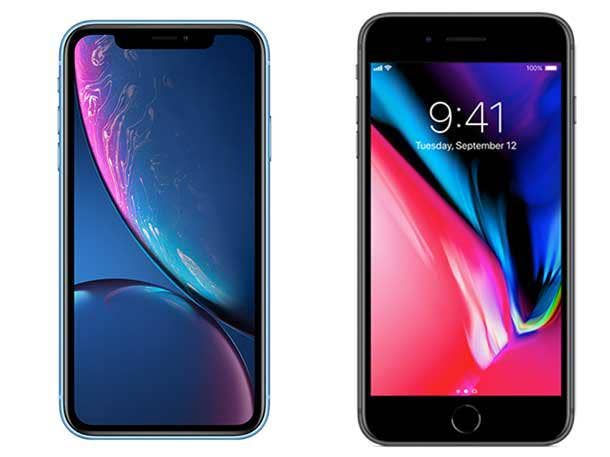
Face Off
Apple's latest update to the iPhone lineup added just one LCD display model: the iPhone XR. The other two newest iPhones feature OLED displays, and significantly higher price tags. That has put the iPhone XR on the same playing field as the large-screened LCD model from late 2017, the iPhone 8 Plus. Apple continues to offer new iPhone 8 Plus for sale, and has lowered the price tag a bit, too.
Perhaps you're considering an upgrade from your iPhone 8 Plus to the iPhone XR--or just looking to buy one of the two iPhones new. Which iPhone is the better fit for your needs? What follows is our comparison of Apple's iPhone XR vs iPhone 8 Plus on specs and price.
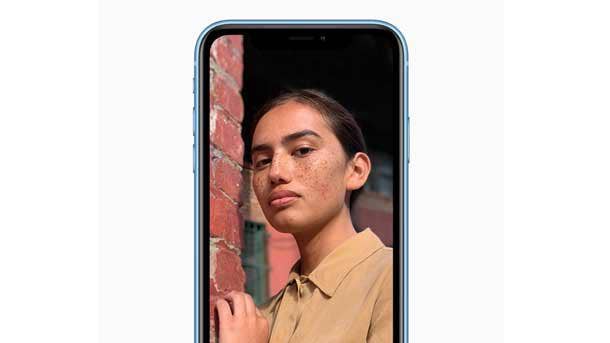
Display
Even though the "Plus" designation used to signify the largest display in the iPhone lineup, all of that has changed over the last couple years. As a result, the iPhone 8 Plus actually features a significantly smaller display than the iPhone XR. The 8 Plus display measures 5.5 inches diagonally, versus 6.1 inches on the XR.
Another key difference: While the iPhone 8 Plus includes large bezels above and below the screen (previously the standard design for iPhones), the iPhone XR features only a minimal border around its display--giving it a nearly edge-to-edge appearance. However, there's still a sizable camera notch at the top of the XR’s screen, of course.
As mentioned, both the 8 Plus and XR include LCD displays. On resolution, the iPhone 8 Plus comes out ahead with resolution of 1,920 x 1,080 for 401 ppi (pixels per inch). The iPhone XR offers 326 ppi with 1,792 x 828 resolution. However, Apple says a newly developed "Liquid Retina LCD" display for the iPhone XR features improved colors and picture quality over past LCD screens.
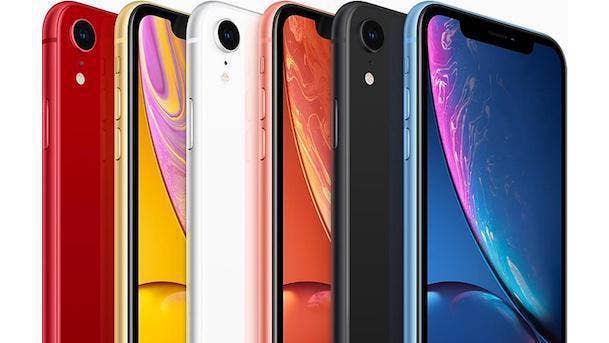
Overall Size & Colors
Despite having far more screen space, the iPhone XR is actually smaller overall than the iPhone 8 Plus—thanks to the XR’s drastic reduction of the bezel space around the screen. The iPhone XR measures 5.94 x 2.98 inches, equaling 17.7 square inches on one side, and weighs 6.8 ounces. By contrast, the iPhone 8 Plus measures 6.24 inches x 3.07 inches, equaling 19.16 square inches on one side, and weighs 7.1 ounces.
Interestingly, Apple is offering many more color choices for the iPhone XR. The phone is available in six colors--red, yellow, white, coral, black or blue. That's compared to three color options for the iPhone 8 Plus—gold, space gray and silver.
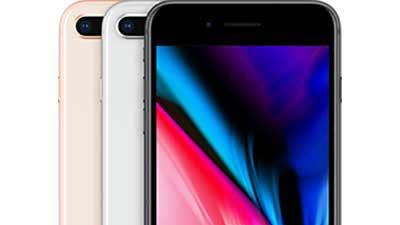
Processor & Battery Life
On performance, the iPhone XR benefits from being the newer phone to market and thus featuring Apple's latest-generation processor—the A12 Bionic. The six-core CPU in the A12 Bionic includes two high-performance cores, which run at up to 15 percent faster speeds than the chip in the iPhone 8 Plus, the A11 Bionic. The XR's A12 Bionic chip also has four low-power cores for less-intensive use, featuring up to 50 percent improved energy efficiency compared to the A11 chip in the iPhone 8 Plus. The four-core GPU in the A12 Bionic chip boosts graphics performance by up to 50 percent, meanwhile.
Users that highly value battery life also may prefer the iPhone XR, which promises 15 hours of internet use on a charge, or 25 hours of talk time. By contrast, Apple promises 13 hours of Internet usage on a charge for the iPhone 8 Plus, or 21 hours of talk time. Both iPhones are able to charge wirelessly with a Qi charging pad.
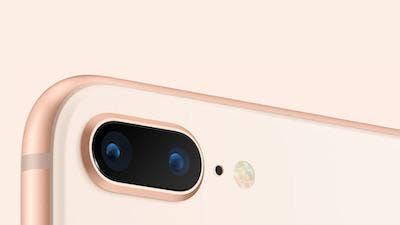
Camera & Biometrics
Another distinguishing factor between the two iPhones is the camera system, though this time the iPhone 8 Plus has the leg-up. The 8 Plus features a pair of 12-megapixel cameras--wide-angle and telephoto--with optical image stabilization. Special features include Portrait Lighting, which improves the lighting of the contours over a subject's face.
The iPhone XR includes just a single camera on the rear—a wide-angle camera offering 12 megapixels and optical image stabilization. The camera comes with features such as Portrait Mode and Portrait Lighting, as well as Apple's "Smart HDR" camera feature—which combines numerous images to deliver a photo that is more highly detailed.
On biometrics, the iPhone XR offers unlocking with Face ID facial recognition. The iPhone 8 Plus unlocks with Touch ID fingerprint recognition, which has been phased out in the newer iPhone models.

Price
While Apple's iPhone 8 Plus is nearly two years old at this point, the starting price is not that much lower than the iPhone XR price (even with a price cut to the 8 Plus by Apple). The iPhone 8 Plus has a starting price of $699, versus the $749 starting price for the iPhone XR. For that extra $50, the iPhone XR gets you a larger display with a smaller bezel, a smaller-sized phone overall, faster performance, longer battery life and more color choices. The iPhone 8 Plus still has a few advantages to offer, though, with its dual-camera system and higher-resolution display. And potentially, if you are a fan of Touch ID fingerprint unlocking, that could be a selling point for the iPhone 8 Plus, too.